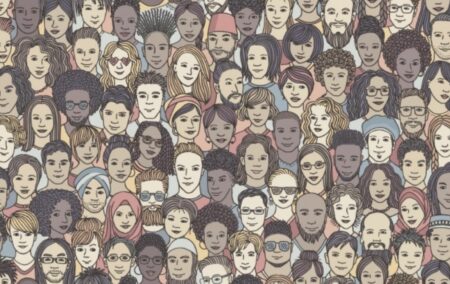The ANC Government continues with its Black Economic Empowerment (BEE) efforts to ‘unleash the full potential of all South Africans to contribute to wealth creation’. However, according to Professor William Gumede of Wits University, close to R1 trillion has been transferred in BEE share deals, with this funding only going to ‘a handful of politically connected politicians, trade unionists, and public servants’.
Thus in practice, BEE has had precisely the opposite effect of that intended, since the favoured few have done little to expand the economy, and there has been little development of black entrepreneurial capacity.
By its very definition, BEE is dependent on race, yet the legislation has no specification of how this is to be determined. As is well known, there is no personal South African document which specifies race – nothing in ID documents, driver’s licences or passports.
The Act then requires employers to perform the racial classification of their employees. Clearly this is not a straightforward process, in particular with the very varied background of people living in South Africa.
This has been highlighted by the acknowledgement that FW de Klerk, last President of the National Party Government, was descended from a female slave, Diana of Bengal. Similarly, Paul Kruger, President of the South African Republic from 1883 to 1900, was descended from Groote Catrijn, a slave also from Bengal on the Coromandel Coast of India.
So neither of these two Presidents can be classified as ‘white’ in the context of European ancestry. In South African terminology they were both of mixed ancestry and therefore were ‘coloureds’.
The 2015 census showed that Afrikaans was chosen as home language by the third biggest group of South Africans, with only Zulu and Xhosa having more adherents. A recent study found that 98.7% of these Afrikaners were admixed, i.e. had a portion of their DNA with a non-European origin.
What about so-called Africans? Even a brief look at history will show that the continent has as much diversity as any other place on our planet. There is no cultural, ethnic, religious, racial or other characteristic that can define a person as an ‘African’. Certainly, the people of north Africa have a greater association with southern Europe and the middle East than they have with sub-Saharan Africa.
Farther south the Arab slave trade carried on down the east coast of Africa for more than 1000 years, and there was contact with the peoples of India, China and the Middle East for many centuries before the Europeans came. Finds of pottery and ninth century glass beads attest to this involvement, and from the tenth century there was an increasing involvement of southern African communities with the wider world.
From around 1100 the Shashe-Limpopo basin emerged as a major player in the networks that brought in beads and cloth in exchange for ivory, gold and other produce. Mapungubwe flourished for more than a century from around 1220, with extensive signs of trade through the East African coast. Of particular interest is the fact that the gold rhino – icon of Mapungubwe – has only one horn like the Indian rhino. By comparison, the African rhino has two horns.
Thus, people of different cultural and economic backgrounds mixed and were involved in a complex socio-political environment in the southern African region. Most were Bantu-speaking, but they also included the San. Interestingly, the National Geographic Genographic Project lists the Khoisan as a reference population group containing perhaps some of the oldest populations in Africa, with a unique genetic pattern that sets them apart from most other African groups. However, even here there is a 3% origin listed in Southern Asia.
With all this variety, the racial classification of employees is obviously not a simple matter for employers. Moreover, no guidelines are given in terms of how to determine the race of a person – quite clearly an assessment in terms of external looks is not sufficient to determine origins and race.
In terms of the Act, the easiest and most practical solution to this problem is to register all employees as ‘coloured’. As indicated above, this will probably cover most South Africans, and if there are problems it will be up to the administrators of the Act to come up with a workable solution in terms of identifying race.
In particular, it may even lead to the realisation that trying to identify people by race and then classifying their capabilities in terms of that identification is a futile exercise. We can then agree with Professor Barney Pityana when he stated that: ‘race is an artificial construct that should not play a role in our country’s future’.
[Image: Franzi/Shutterstock.com]
The views of the writer are not necessarily the views of the Daily Friend or the IRR
If you like what you have just read, support the Daily Friend.

